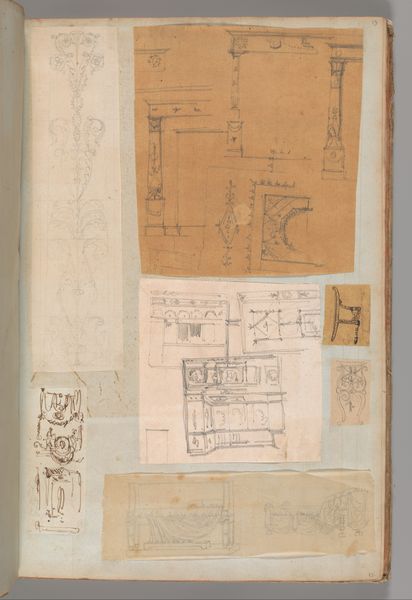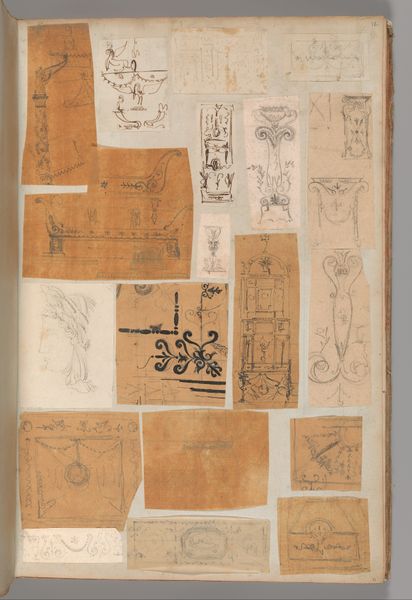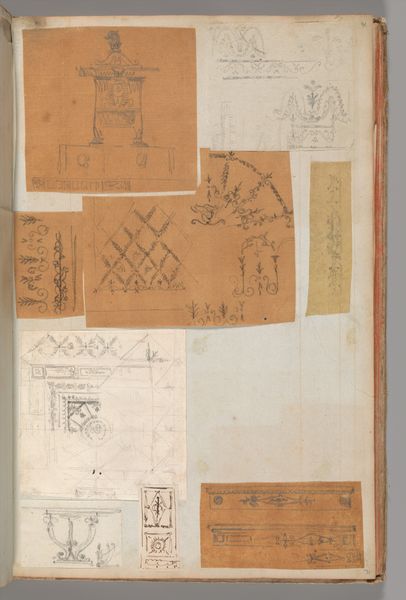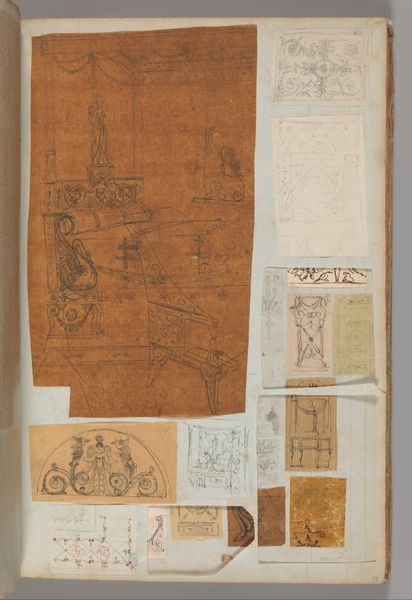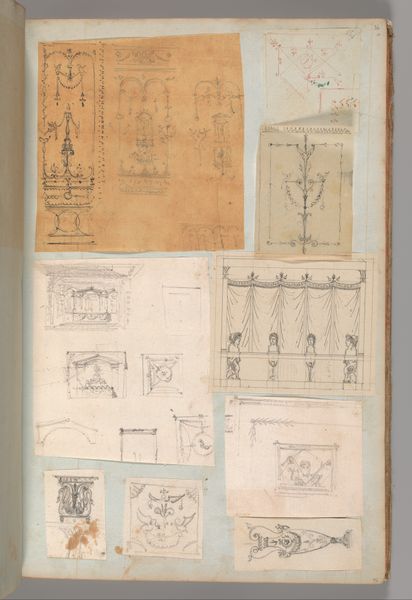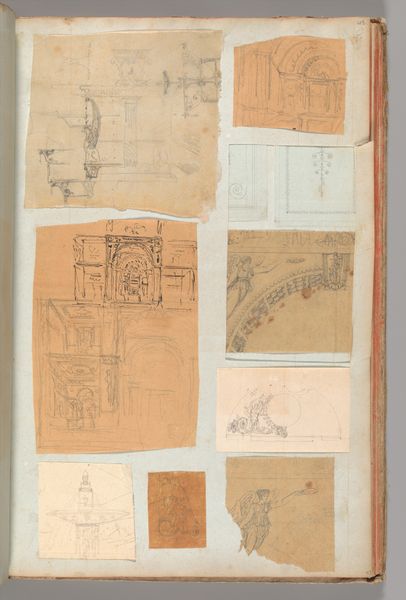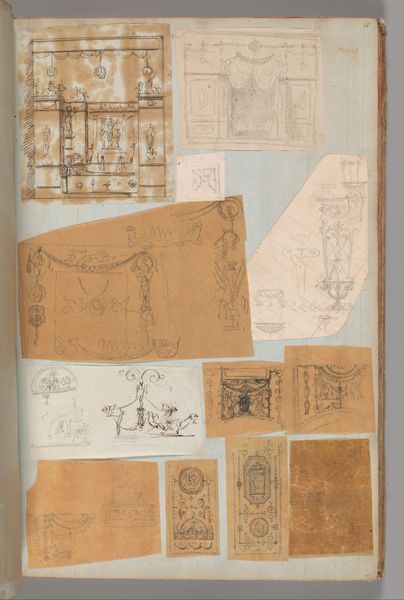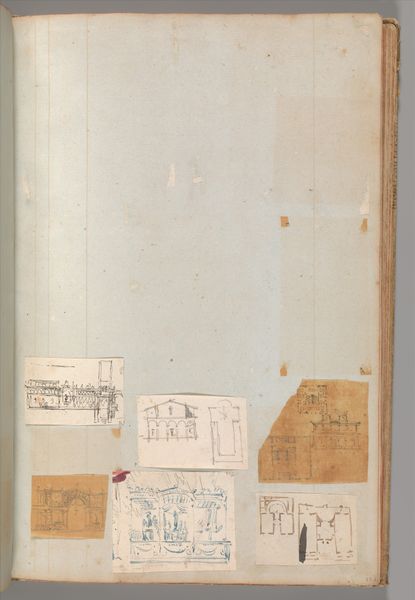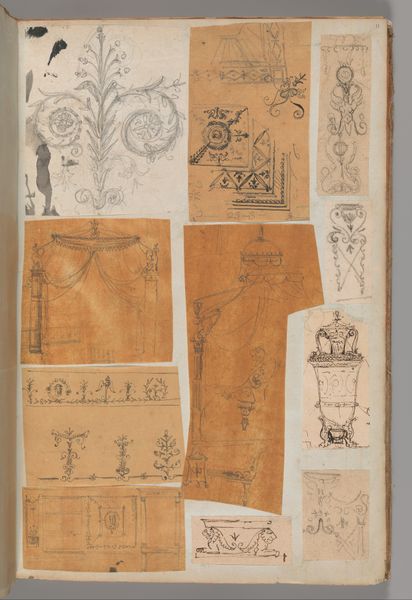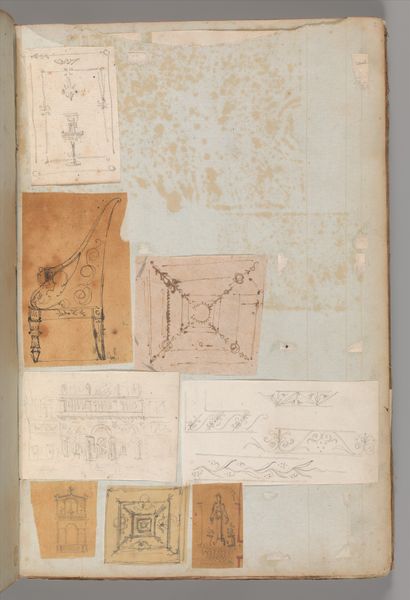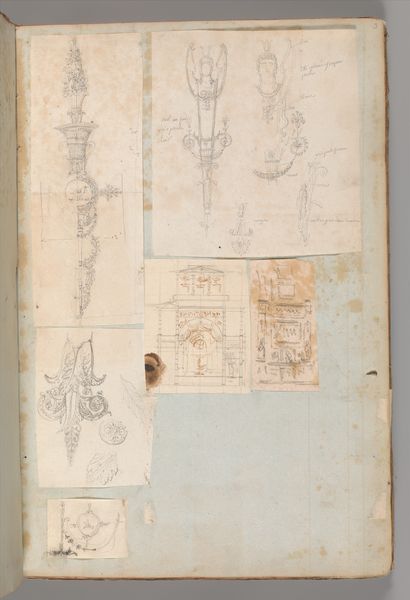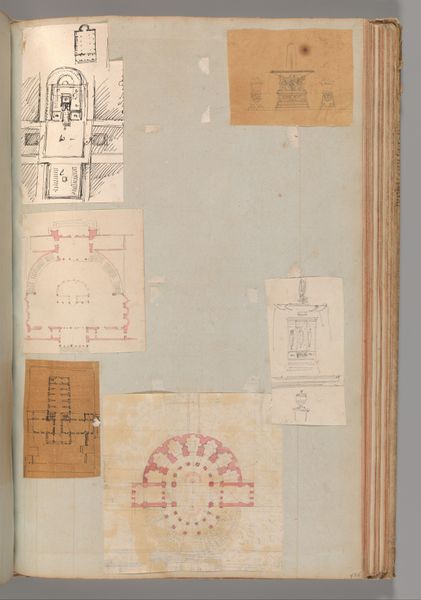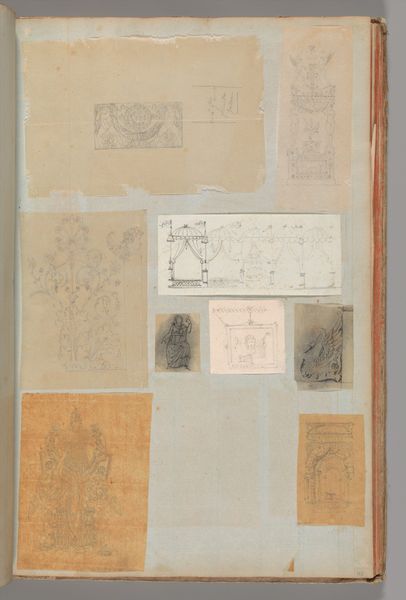
Page from a Scrapbook containing Drawings and Several Prints of Architecture, Interiors, Furniture and Other Objects 1795 - 1805
0:00
0:00
drawing, print, paper, pencil, architecture
#
drawing
#
neoclacissism
# print
#
furniture
#
paper
#
pencil
#
architecture
Dimensions: 15 11/16 x 10 in. (39.8 x 25.4 cm)
Copyright: Public Domain
Editor: Here we have a page from a scrapbook by Charles Percier, created sometime between 1795 and 1805. It’s a collection of drawings and prints, featuring architecture, furniture, and various objects, all rendered with pencil on paper. I find the arrangement quite intriguing, almost like a mood board for neoclassical design. What can you tell us about this page? Curator: This scrapbook page gives us insight into the material conditions of design and production during the late 18th and early 19th centuries. These drawings and prints are not simply aesthetic exercises; they're evidence of the labor involved in visualizing and disseminating design ideas. Consider the paper itself, the pencils used - where did they come from? Who produced them? And what about the prints, how were they made? These seemingly mundane aspects are crucial to understanding the creative process. Editor: So you're focusing on the physical aspects of creating this image, as well as the larger material world and labor that this involved? Curator: Precisely. We need to unpack the layers of materiality here. The juxtaposition of drawings and prints also complicates traditional notions of originality and reproduction. Are these designs intended for mass production? Or are they unique, handcrafted objects meant for a select clientele? The very act of compiling these images in a scrapbook – what does that say about the collecting and consumption of design ideas at the time? Editor: That's a great point. It makes me consider who would have had access to this information and how it would influence design trends. Did Percier intend these for other artisans? Curator: Perhaps. Or even for wealthy patrons seeking inspiration for their homes. Either way, by looking at the materials and means of production, we can start to piece together a more nuanced understanding of the social and economic forces shaping neoclassical design. Think of the paper mills, the pencil makers, the printmakers - a whole network of labor is implicated in this single page. Editor: I never really considered it like that, all the hands involved. This reframes my view on design history entirely. Thanks for enlightening me! Curator: My pleasure. It's about seeing beyond the surface and understanding art as a product of specific material conditions and social relations.
Comments
No comments
Be the first to comment and join the conversation on the ultimate creative platform.

